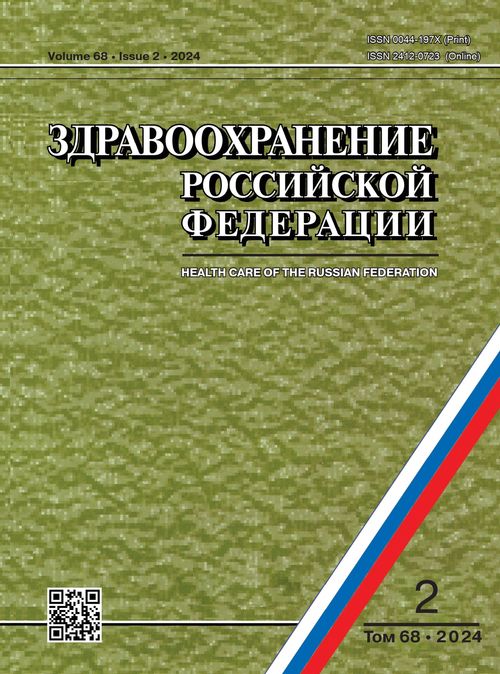State measures to ensure the availability of penicillin in the USSR over the second half of the 1940s
- Авторлар: Sherstneva E.V.1
-
Мекемелер:
- N.A. Semashko National Research Institute of Public Health
- Шығарылым: Том 68, № 2 (2024)
- Беттер: 170-173
- Бөлім: HISTORY OF HEALTH CARE AND MEDICINE
- ##submission.dateSubmitted##: 25.10.2024
- URL: https://hum-ecol.ru/0044-197X/article/view/638119
- DOI: https://doi.org/10.47470/0044-197X-2024-68-2-170-173
- EDN: https://elibrary.ru/hhvrqi
- ID: 638119
Дәйексөз келтіру
Толық мәтін
Аннотация
Based on the analysis of declassified documents of the State Archive of the Russian Federation and the Russian State Archive of Economics, the article considers the issue of measures taken by the USSR government in the second half of the 1940s to ensure economic and physical accessibility for the population of the country of a new drug — penicillin. The author provides information on the number of enterprises that produced antibiotics in the USSR during this period, the total volume of their production. It is shown that the capacity of domestic enterprises for a long time did not allow covering the calculated healthcare need for the drug, which determined its acute shortage. The article considers the process of pricing and government regulation of the price of a domestic drug. Based on a comparison of the cost of penicillin therapy and the income level of the population, it was concluded that the drug was affordable for the country’s residents by the end of the 1940s — beginning of the 1950s. In the conditions of an acute shortage of penicillin in the USSR in 1947, a system of centralized distribution of an antibiotic, paid for from the state budget, was introduced in medical institutions of the country. The Ministry of Health of the USSR developed a special distribution coefficient that determined the share of a particular republic in the total volume of drug supplies. The same principle was also translated to subsequent levels of distribution: by regions and cities. The article reflects the problems that accompanied the process of managing drug turnover within the country. The author showed that the introduction of penicillin into wide clinical practice, accompanied by state support measures, even despite the continued shortage of the drug, quickly and positively affected the health of the population of the USSR.
Acknowledgment. The study had no sponsorship.
Conflict of interest. The authors declare no conflict of interest.
Received: November 24, 2022 / Accepted: January 12, 2023 / Published: April 29, 202
Негізгі сөздер
Авторлар туралы
Elena Sherstneva
N.A. Semashko National Research Institute of Public Health
Хат алмасуға жауапты Автор.
Email: lena_scherstneva@mail.ru
ORCID iD: 0000-0002-8612-4834
MD, PhD, leading researcher of the Department of history of medicine and healthcare of the N.A. Semashko National Research Institute of Public Health, Moscow, 105064, Russian Federation.
e-mail: lena_scherstneva@mail.ru
РесейӘдебиет тізімі
- Natradze A.G. Essay on the Development of the Chemical-Pharmaceutical Industry of the USSR [Ocherk razvitiya khimiko-farmatsevticheskoy promyshlennosti SSSR]. Moscow: Meditsina; 1977. (in Russian)
- Katlinskiy A.V., Lopatin P.V., Lindenbraten A.L. Pharmaceutical industry and drug supply. In: Shevchenko Yu.V., Pokrovskiy V.I., Shchepin O.P., eds. Health Care of Russia. XX Century [Zdravookhranenie Rossii. XX vek]. Moscow: GEOTAR-Med; 2001: 212–33. (in Russian)
- Levina E.S. Pages of the history of domestic antibiotics in the 1940s-1950s: science, production, politics. Nestor. 2005; 9: 329–60. https://elibrary.ru/sgcjjp (in Russian)
- Sherstneva E.V. The international participation in organization of production of antibiotics in the USSR: “the penicillin project” of the United Nations relief and rehabilitation administration (1946–1947). Problemy sotsial’noy gigieny, zdravookhraneniya i istorii meditsiny. 2021; 29(2): 373–8. https://doi.org/10.32687/0869-866X-2021-29-2-373-378 https://elibrary.ru/gydufh (in Russian)
- Zubkova E.Yu. Post-war Soviet society: politics and everyday life. 1945–1953. Moscow: The Russian Political Encyclopedia; 2000. https://elibrary.ru/rcgwbb (in Russian)
- Bondarev Yu.V. Selected Works. Volume 1 [Izbrannye proizvedeniya. Tom 1]. Moscow; 1977. (in Russian)
- Kuznetsova N.V. Decrease in prices and material standard of living of the population of the USSR in 1947–1952. Vestnik Volgogradskogo gosudarstvennogo universiteta. Seriya 4: Istoriya. Regionovedenie. Mezhdunarodnye otnosheniya. 2008; (1): 32–42. https://elibrary.ru/jtbasr (in Russian)
- Zeyfman N., Zykova G. From the history of penicillin in the USSR after the war (V.I. Zeifman and E.B. Chein). Znanie – sila. 2018; (1): 40–8. (in Russian)
- Zatravkin S.N., Vishlenkova E.A. The restoration or formation? The post-war reform of the soviet health care. Problemy sotsial’noy gigieny, zdravookhraneniya i istorii meditsiny. 2020; 28(5): 1011–6. https://doi.org/10.32687/0869-866X-2020-28-5-1011-1016 https://elibrary.ru/jpaizs (in Russian)
Қосымша файлдар








